Australia is a land of dragons. The island continent is home to the world’s greatest diversity of lizards, with over 800 species including goannas, skinks, legless lizards and geckoes. Some of the most charismatic are the dragon lizards (family Agamidae), a group of about 117 species which have rough scales and striking range of appearances, some adorned with colourful accessories like frills, crests and beards.
Dragons range in size from the tiny Heath Dragons (Ctenophorus spp.) at just 4-8 centimetres, to the large Eastern Water Dragons (Intellagama leseurii) which grow to a metre long and can be seen lazing along urban riverbanks on the east coast. The family also includes six species of Bearded Dragons (Pogona spp.), and national icons like the Frilled Lizard (Chlamydosaurus kingii).
Here are some of the dragon lizards found across AWC sanctuaries around Australia.
Frilled Lizard
Chlamydosaurus kingii
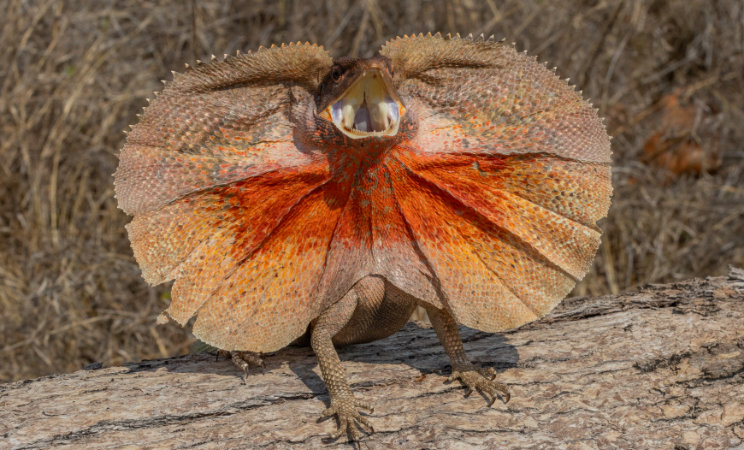 Jake Barker/AWC
Jake Barker/AWC
The Frilled or Frill-necked Lizard is an iconic Australian animal known for its spectacular frill which it can raise to scare off rivals or predators. In the northern dry season Frilled Lizards are difficult to spot, spending most of their time pressed up against the limbs of trees where they are well camouflaged. When approached, they try to stay out of sight by shuffling around to the opposite side of the trunk or branch, staying hidden and peering around with one wary eye to check if the danger has passed. Down on the ground during the humid summer months, Frilled Lizards can quickly get away by running on two legs, with the frill folded back against their body. The colour of the frill varies across their range, being redder in the Kimberley, orange in the Top End, yellow in North Queensland, and whiter in the southern part of their range in Queensland. Frilled Lizards are found in tropical savanna from the Kimberley to North Queensland and are present at several AWC sanctuaries in northern Australia.
Thorny Devil
Moloch horridus
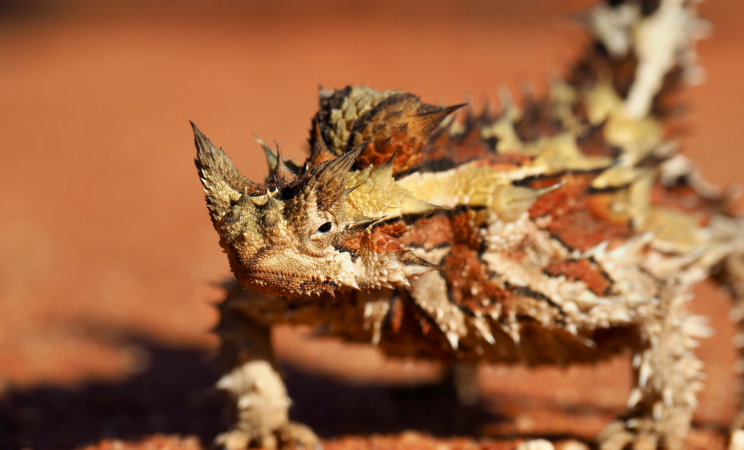 J Clarke/AWC
J Clarke/AWC
The Thorny Devil is an unmistakeable desert lizard, instantly recognizable by the fearsome looking spines which cover its body and act as a deterrent for would-be predators. It is supremely adapted to the very dry conditions and sporadic rainfall of inland Australia. Remarkably, the Thorny Devil has evolved a network of microscopic channels running between its scales which is able to transport water passively from its legs or belly toward the corners of the mouth for a drink. So when rain does occasionally fall in the desert, a Thorny Devil can harvest moisture from a shallow puddle just by dipping a leg in! This species is an ant-eating specialist and lick up more than 1,000 ants each day. Thorny Devils are seen regularly at Newhaven Wildlife Sanctuary and Mt Gibson Wildlife Sanctuary.
Chameleon dragon
Chelosania brunnea
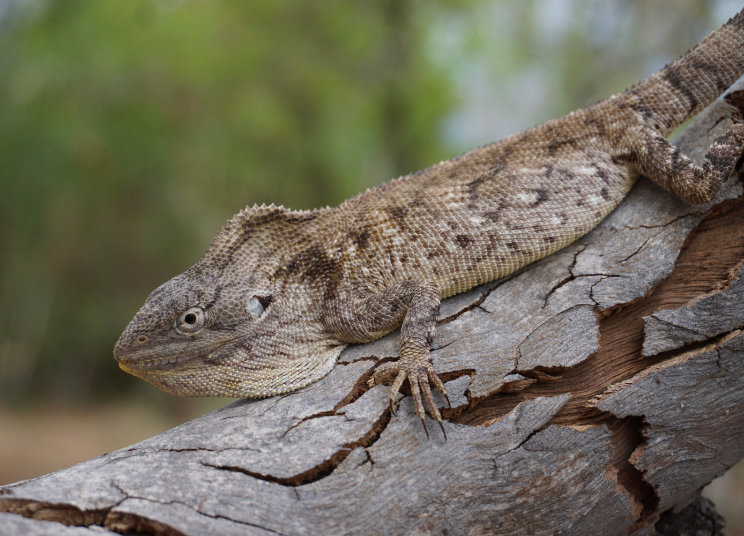 Joe Porter/AWC
Joe Porter/AWC
One of the most enigmatic of Australian lizards is the Chameleon Dragon, a cream-grey coloured lizard which lives in tropical savanna from the Kimberley to far northwest Queensland. This medium-sized dragon spends most of its time up in the trees and is rarely encountered by people, even keen-eyed ecologists. However it has been recorded across AWC sanctuaries and partnership sites within its range including at Yampi, Charnley River, Wilinggin, Mornington, Bullo River Station and Pungalina.
Painted Dragon
Ctenophorus pictus
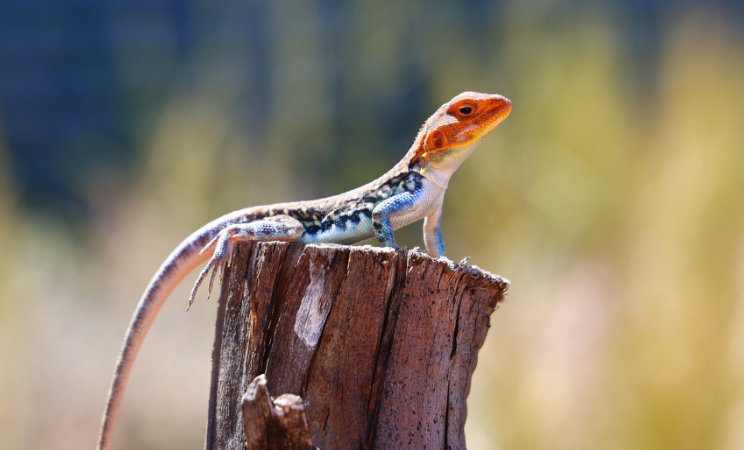 Elly Gearing/AWC
Elly Gearing/AWC
Many dragons are strongly territorial and are not afraid to defend their patch. From its perch on a prominent rock or stump, the Painted Dragon signals to defend its territory by making conspicuous movements including push-ups, head-bobs, waving a limb and flicking its tail. Males show a flush of vivid colours in the breeding season which adds to the intimidating display. This species has been recorded at Scotia Wildlife Sanctuary in the far west of NSW.
Eastern Water Dragon
Intellagama leseurii
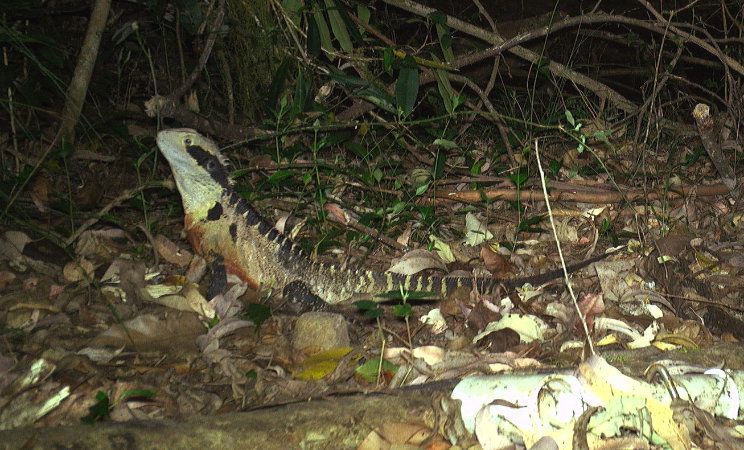 AWC
AWC
Australia’s largest dragon lizard, the Eastern Water Dragon can grow to over a metre long. This species is a confident swimmer, and leaps into the water to escape when threatened. These dragons swim like crocodiles, undulating from side to side and using their long tail to propel themselves efficiently through the water. Eastern Water Dragons have been detected at Waulinbakh Wildlife Sanctuary on motion-sensor cameras during the first AWC inventory surveys of the property, and also occur at Mt Zero-Taravale, Curramore and Brooklyn Wildlife Sanctuaries in Queensland.
Support Australian Wildlife Conservancy's science-led conservation work and safeguard the future of Australia's native species
Donate Now